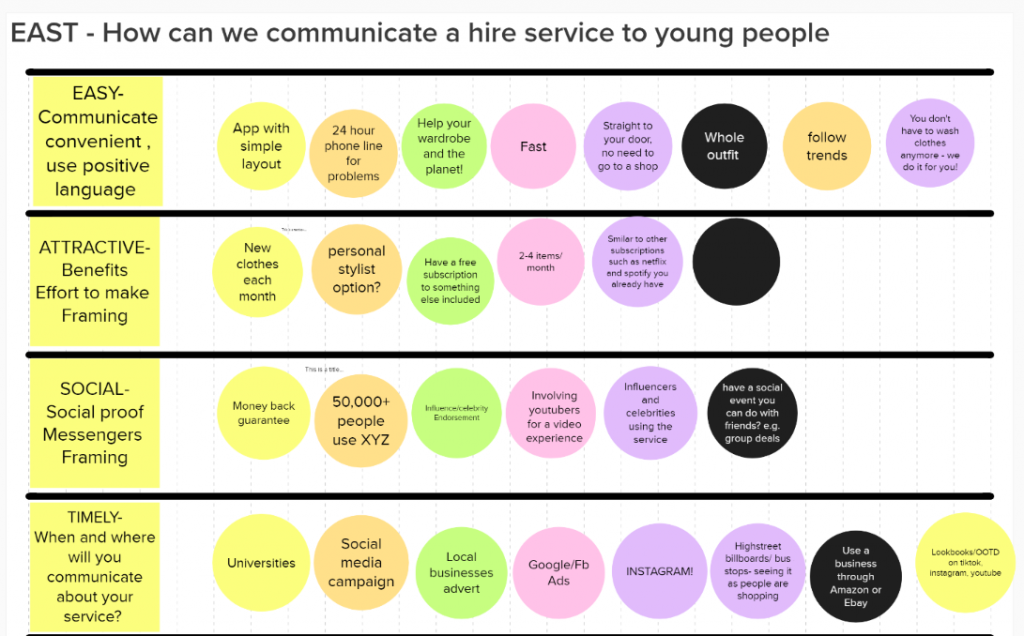
Undressing and changing the fashion habit
by Livvy Drake
I recently saw this Metro article We all know the true cost of fast fashion, so why can’t we kick the habit? about the social and environmental issues of fast fashion, but I didn’t feel it addressed the psychology and the emotional states that shopping satisfies. As this is what really needs to be understood to make long-term behaviour change.
I had discussed this on a 1-1 behaviour change power hour with a client creating a waste-less clothes campaign for young people, where I kept coming back to what is the ‘need’ that fast fashion and shopping fulfil and how can you replace that?

So here’s what the psychology says about the allure of shopping:
The happiness arises from the motivations driving the purchases, rather than from the object itself, e.g. looking good, fitting in with a self or group identity, feeling attractive.
Shopping also gives a dopamine hit as it activates our desire for new and novel things. So the constant stream of new lines in fast fashion (seasons are so the 80’s and 90’s) feed the dopamine habit. The hit is so high that, only 19% in a US survey were as excited about a holiday or a birthday as a sale!
However, the high is short-lived as the spending of money also makes us feel bad (loss aversion). In the same US survey, buying an expensive item left 56% felt “extremely guilty” or a “little bit guilty,”. With this much higher (73%) in the millennial age group (1981 and 1996).
So buying cheap reduces the ‘neural pain’—the sense of loss as cash is spent and furthermore can justify the purchase against any criticism about spending money, especially for those who are expected to be saving or have a limited income (young people).
And it’s not just young people. I know a lot of people who have been doing a lot of online shopping during lockdown, to make themselves feel better. And I certainly have experienced the buzz of eBay auction shopping, followed by the absolute disappointment that I had paid nearly the full retail price.


So how can buying less or better quality be presented as an attractive proposition if it doesn’t stimulate those dopamine paths?
It appears to me that the most ethical shopping solution that fits with both the circular economy (keeping items in use for as long as possible through reuse and redesign) and the need for a dopamine fix is the clothing hire model.
Clothing models like Devout provide subscribers with 5 new wardrobe items every month, and without the need to even wash the clothes. The brands on there are good quality, ‘ethical’ brands so for £79.99 people can own 5 items valued at much more individually. Mud Jeans offer a lease model where people pay £7.99 a month and at the end of the year can return for a new pair or keep.
But does this price point work for the young fast fashion addict?
I posed this question to a group of students on the UpRising Ethical Business module . What would make a hire model attractive to young people? They came up with lots of ideas using the behavioural economics model of EAST- Easy, Attractive, Social and Timely. Thinking about young people who wear something only once and those who may want to keep for longer. Below are the ideas:


What about second-hand?
As someone who buys second-hand, I would say this provides the buzz of shopping, no ‘loss aversion or guilt’ about the price tag and is preventing clothes going into landfill. Although, it does rely on some people still buying new and doesn’t necessarily break the chain of fast fashion. Especially as the clothes I always pick up at charity shops are the fast fashion brands from supermarkets and Primark. Potentially for it to move to a fully sustainable model it would rely on people spending more on items, that they know will last, so they can sell them without losing value (knowing they will get their money back when they sell it on Depop).

How can you get to the heart of what actually motivates habits for people?
As with the students at UpRising, I delve into this phenomena in my workshops on behaviour change and understanding audiences. These are available to attend live or on-demand.
Interested in more behaviour change inspiration? Sign up to my Sustainable Sidekicks newsletter

You might also like:


